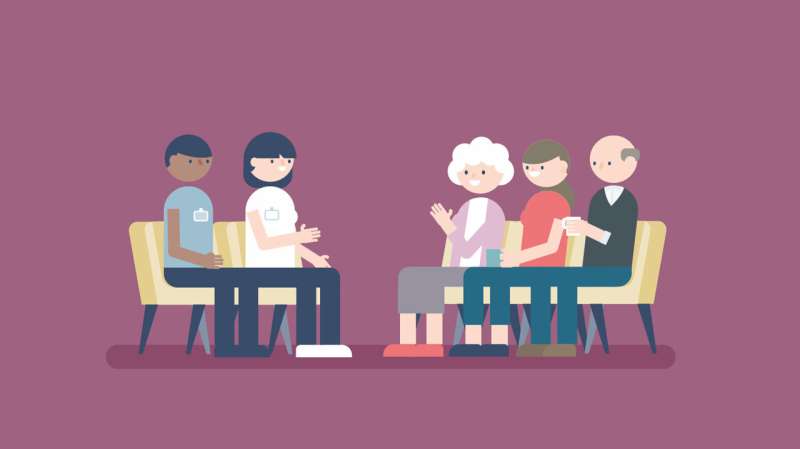
Staff in nursing homes are being encouraged to learn about the Namaste Care program to enhance the quality of life for residents with dementia.
The Namaste Care program was developed in the U.S., and seeks to give comfort and pleasure to people with advanced dementia through engagement and meaningful activity, fun, sensory stimulation, especially through touch and movement.
A feasibility trial of Namaste Care was carried out by Lancaster University in conjunction with partners across the U.K. who tested its use with people with advanced dementia in nursing care homes in a study funded by the National Institute for Health and Care Research.
Professor Catherine Walshe, Professor of Palliative Care and Co-Director of the International Observatory on End of Life Care, part of the Division of Health Research at Lancaster University, said: “People with advanced dementia living in care homes sometimes spend long hours alone in their rooms, and care home staff can find it hard to engage them with the day to day activities in the care home. Namaste Care provides a structured way of engaging with people with advanced dementia, with indications that this increases social engagement and promotes greater calm.”
Namaste Care is run by the staff already working within the care home, and does not require expensive equipment. It suggests structure on the “empty time” for residents with advanced dementia when they are not engaged in personal care or mealtimes.
The overall aim is to enhance quality of life for residents with advanced dementia. Namaste Care is based around sensory experience: music, massage, color, taste and scents.
https://youtube.com/watch?v=Awlh2aBWYOw%3Fcolor%3Dwhite
Examples include:
- Offer familiar objects from a personal memory box
- Scent the room, perhaps varying floral, citrus and wood aromas
- Hand massage, foot spa and a facial with warm flannels to the face and hands
- Vary the volume, tempo and style of music
- Speak appreciatively and affirmatively to residents
- Read familiar texts of poetry relevant to residents
- Fun activities such as blowing bubbles
Source: Read Full Article
